Tajikistan Flag Meaning
Three horizontal stripes of red, white, and green with a golden crown topped by seven stars in the center of the white stripe, representing the unity of workers and peasants, cotton and snow-capped mountains, the verdant valleys, and the Somoni crown symbolizing Tajik sovereignty and the seven regions of historical Tajikistan.
- Continent
- Asia
- Adopted
- 1992
- Ratio
- 1:2
- Colors
- red, white, green, yellow
- Designer
- Unknown
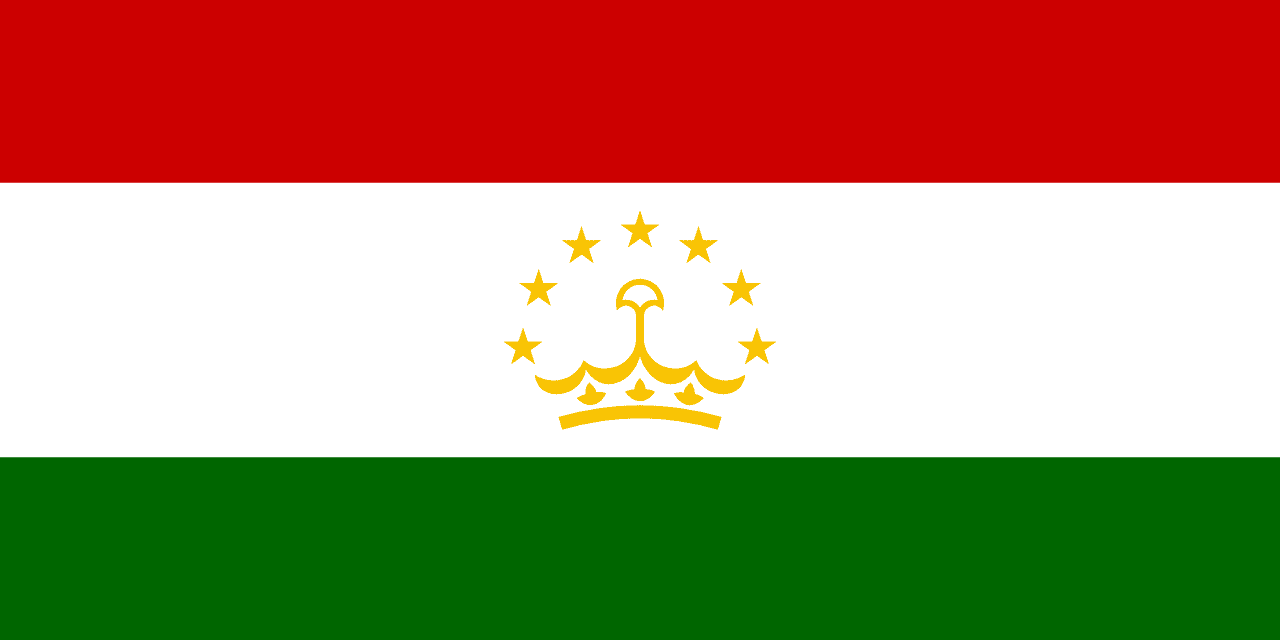
Symbolism
Red Stripe: Represents the unity of the nation and the brotherhood of workers and peasants, symbolizing the blood shed for independence and the solidarity of the Tajik people in their struggle for freedom and dignity.
White Stripe: Represents cotton, the main agricultural product, and the snow-capped peaks of the Pamir Mountains, symbolizing purity, the country's mineral wealth, and the natural barriers that have shaped Tajik identity.
Green Stripe: Represents the verdant valleys and the Islamic faith of the majority population, symbolizing the fertile oases that sustain life and the spiritual foundation of Tajik society.
Golden Crown: Represents the Somoni crown, named after Ismail Samani (Ismoil Somoni), founder of the first Tajik state, symbolizing sovereignty, independence, and the historical continuity of Tajik statehood.
Seven Stars: Represent the seven regions of historical Tajikistan and the seven heavens in Islamic cosmology, symbolizing happiness, prosperity, and the unity of all Tajik lands and peoples.
History
- 6th Century BC-7th Century AD: The region was part of ancient Persian empires including the Achaemenids and Sassanids, establishing the Persian cultural and linguistic heritage that defines modern Tajik identity.
- 7th-10th Century: Arab conquest brought Islam while Persian culture remained dominant, with the Samanid dynasty (819-999) establishing the first Tajik state centered in Bukhara and Samarkand.
- 10th-19th Century: Various Turkic and Mongol dynasties ruled the region, though Persian culture and language persisted among the sedentary population in the mountains and valleys.
- 1860s-1920: Russian conquest brought the northern territories under Tsarist control, while southern regions remained part of the Emirate of Bukhara until the Russian Revolution.
- 1924: Soviet national delimitation created the Tajik Autonomous Soviet Socialist Republic within Uzbekistan, separating Tajik-speaking areas from their historic centers.
- 1929-1991: Tajikistan became a full Soviet republic, experiencing modernization, industrialization, and education while suppressing Islamic and traditional culture under communist rule.
- September 9, 1991: Tajikistan declared independence from the Soviet Union, initially under communist leader Rahmon Nabiyev, but political competition quickly led to instability.
- November 24, 1992: The current flag was adopted as civil war erupted between various factions including communists, democrats, and Islamists, devastating the newly independent country.
- 1992-1997: Civil war killed over 100,000 people and displaced one million, with Emomali Rahmon's government eventually defeating opposition forces with Russian support.
- 1997-Present: The peace agreement ended the civil war, but Rahmon has consolidated authoritarian rule, eliminating opposition and becoming one of the world's longest-serving leaders.
Trivia
- Tajikistan is the most mountainous country in Central Asia, with over 90% of its territory covered by mountains, including the Pamir range known as the 'Roof of the World.'
- The flag represents the only Persian-speaking country in Central Asia, with Tajik being closely related to Dari and Farsi, connecting Tajikistan to Afghanistan and Iran.
- Tajikistan is one of the world's most remittance-dependent economies, with money sent home by migrant workers in Russia comprising about 30% of GDP.
- The country contains the Fedchenko Glacier, one of the longest glaciers outside the polar regions, and numerous peaks over 7,000 meters including Ismoil Somoni Peak (7,495m).
- Despite being landlocked and mountainous, Tajikistan has significant hydroelectric potential, generating almost all its electricity from water power but facing seasonal energy shortages.
- The Pamir Highway crosses some of the world's highest mountain passes and connects Tajikistan to China, Afghanistan, and Kyrgyzstan through extreme terrain.
- Traditional Tajik culture includes Persian poetry, particularly the works of Rudaki and Ferdowsi, carpet weaving, and music featuring instruments like the rubab and doira.
- The flag flies over a country where about 98% of the population is Muslim (mostly Sunni), though Soviet legacy has created a largely secular society with moderate Islamic practice.
- Tajikistan faces significant challenges with drug trafficking from Afghanistan, with major smuggling routes passing through the country toward Russian and European markets.
- The Wakhan Corridor, a narrow panhandle in eastern Tajikistan, was created by 19th-century Great Game politics to separate British and Russian territories.
- Traditional foods include plov (pilaf), mantu (steamed dumplings), and nan bread, reflecting Central Asian, Persian, and Islamic culinary influences.
- Cotton remains the main agricultural product despite environmental problems, while aluminum production is the largest industrial activity using abundant hydroelectric power.
- The flag represents a country with significant ethnic minorities including Uzbeks (about 15%) concentrated in the north and west, creating some regional tensions.
- Tajikistan has experienced frequent border conflicts with Kyrgyzstan and maintains a tense relationship with Uzbekistan over water and energy resources.
- Despite authoritarian governance, Tajikistan has achieved improvements in education and healthcare while struggling with poverty, corruption, and limited economic opportunities.
Related Countries
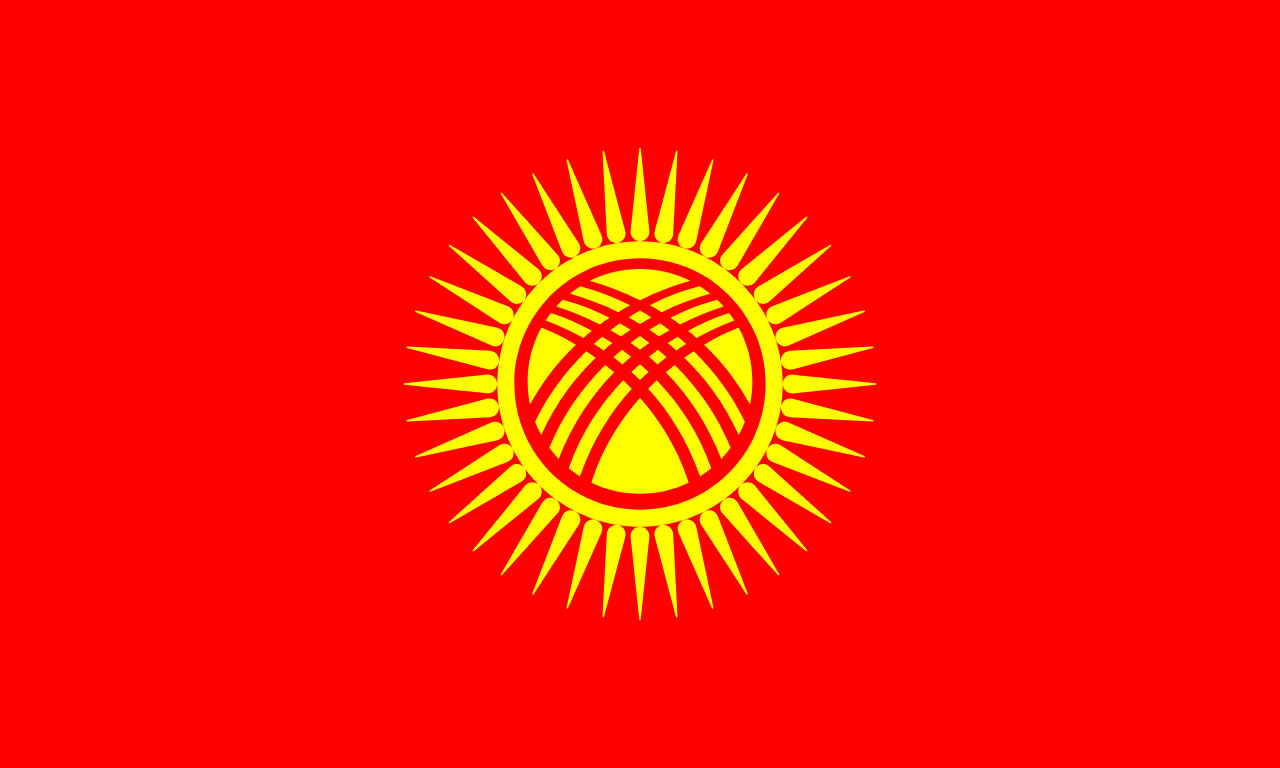
Kyrgyzstan
Asia
A red field with a yellow sun featuring 40 rays and a tunduk (yurt crown) in the center, representing the nomadic heritage, unity of 40 tribes, and the traditional dwelling of the Kyrgyz people in this mountainous Central Asian nation.
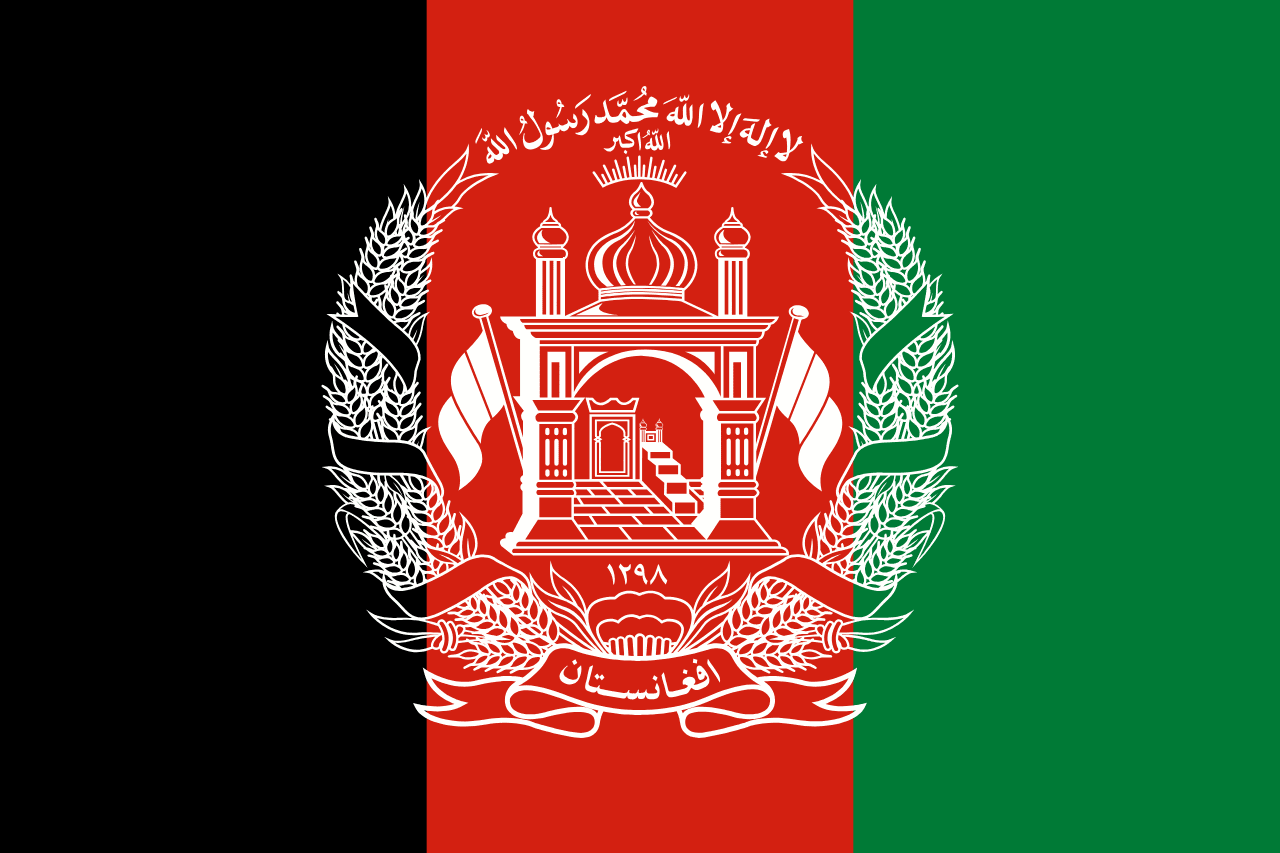
Afghanistan
Asia
Few nations have worn their history so visibly upon their flags as Afghanistan. In just over a century, the country has cycled through more banners than any other modern state, each design mirroring the upheavals of power, ideology, and identity that have defined its story. The current flag, a stark white field bearing the Shahada in bold black script, was restored by the Taliban in 2021. To outsiders, its simplicity may appear severe, even austere. Yet within its minimal form lie deep layers of meaning: an assertion of faith, a claim to authority, and a conscious rejection of the ornate tricolors and emblems that preceded it. To understand this flag is to glimpse not only Afghanistan’s turbulent politics, but also the powerful role of religion, symbolism, and history in shaping its national identity.
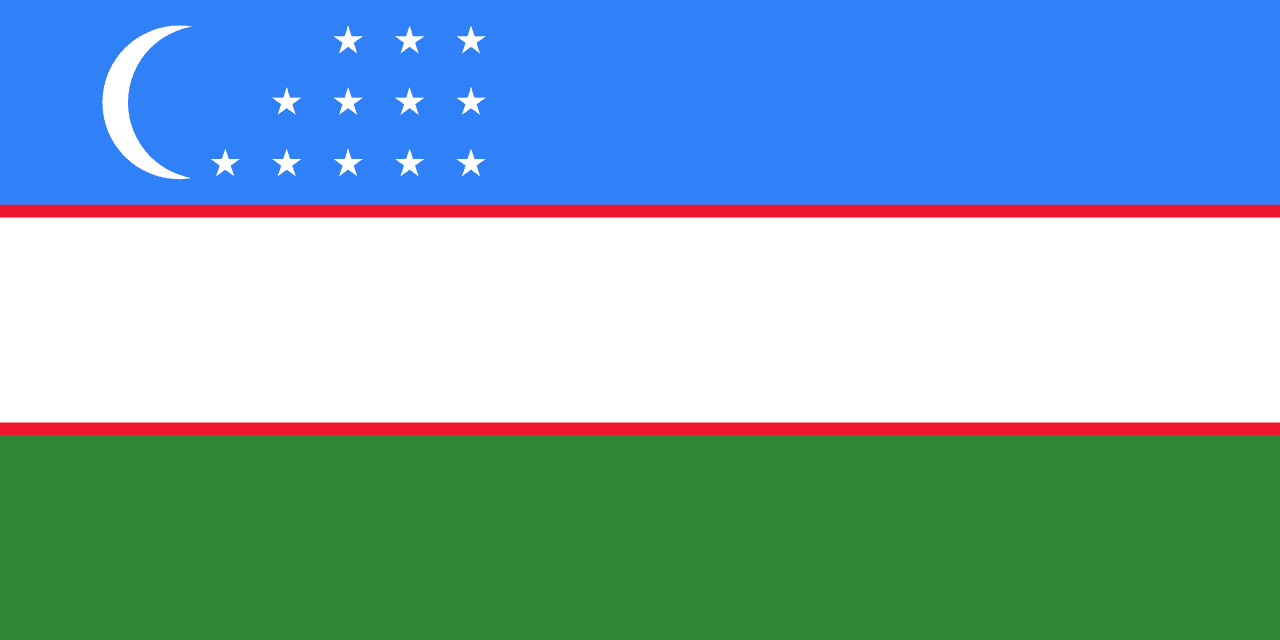
Uzbekistan
Asia
Three horizontal stripes of blue, white, and green separated by thin red stripes, with a white crescent moon and twelve white stars on the blue stripe, representing the sky and water, peace and purity, nature and fertility, the life force, the rebirth of Uzbekistan, and the twelve months of the year.
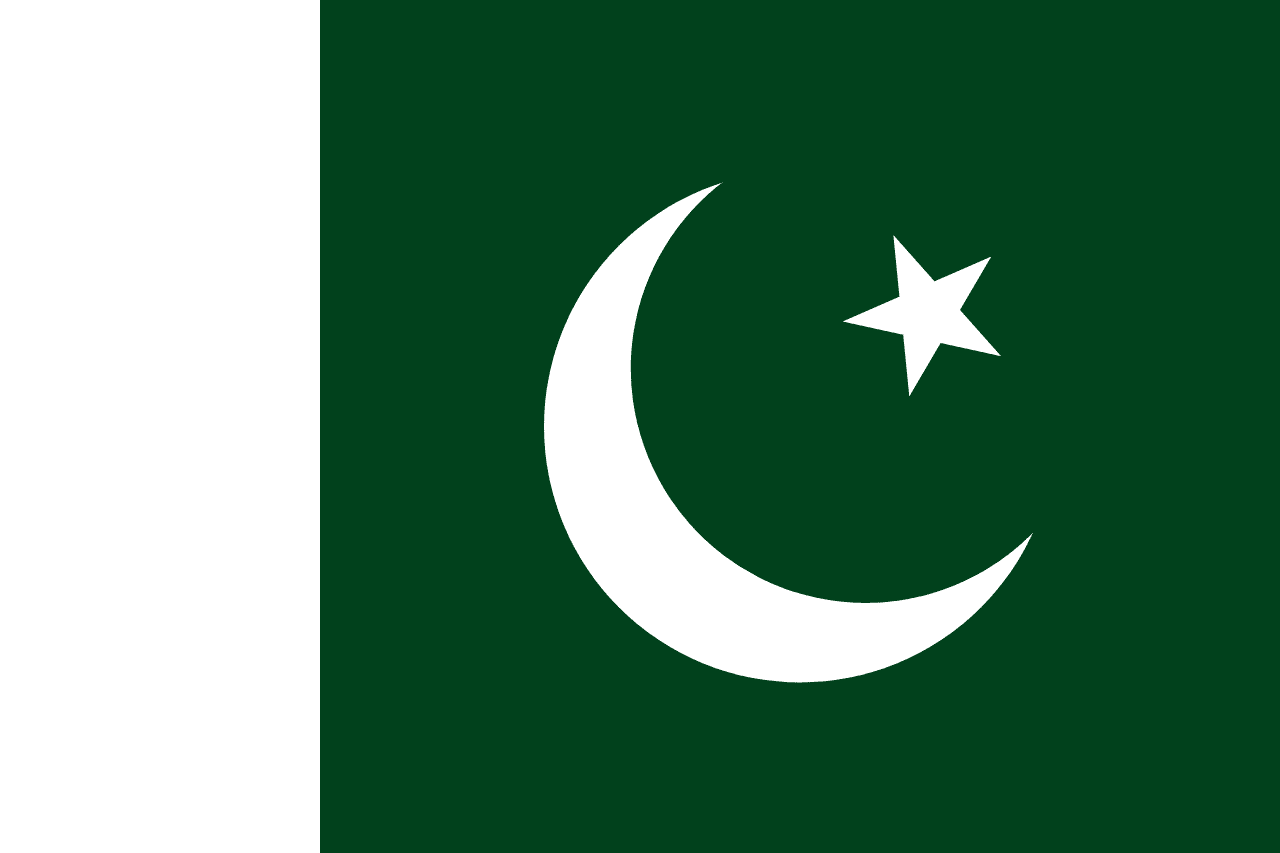
Pakistan
Asia
A green field with a white vertical stripe at the hoist, a white crescent, and a five-pointed star. The flag symbolizes Islam, religious minorities, and the guiding ideals of the nation.
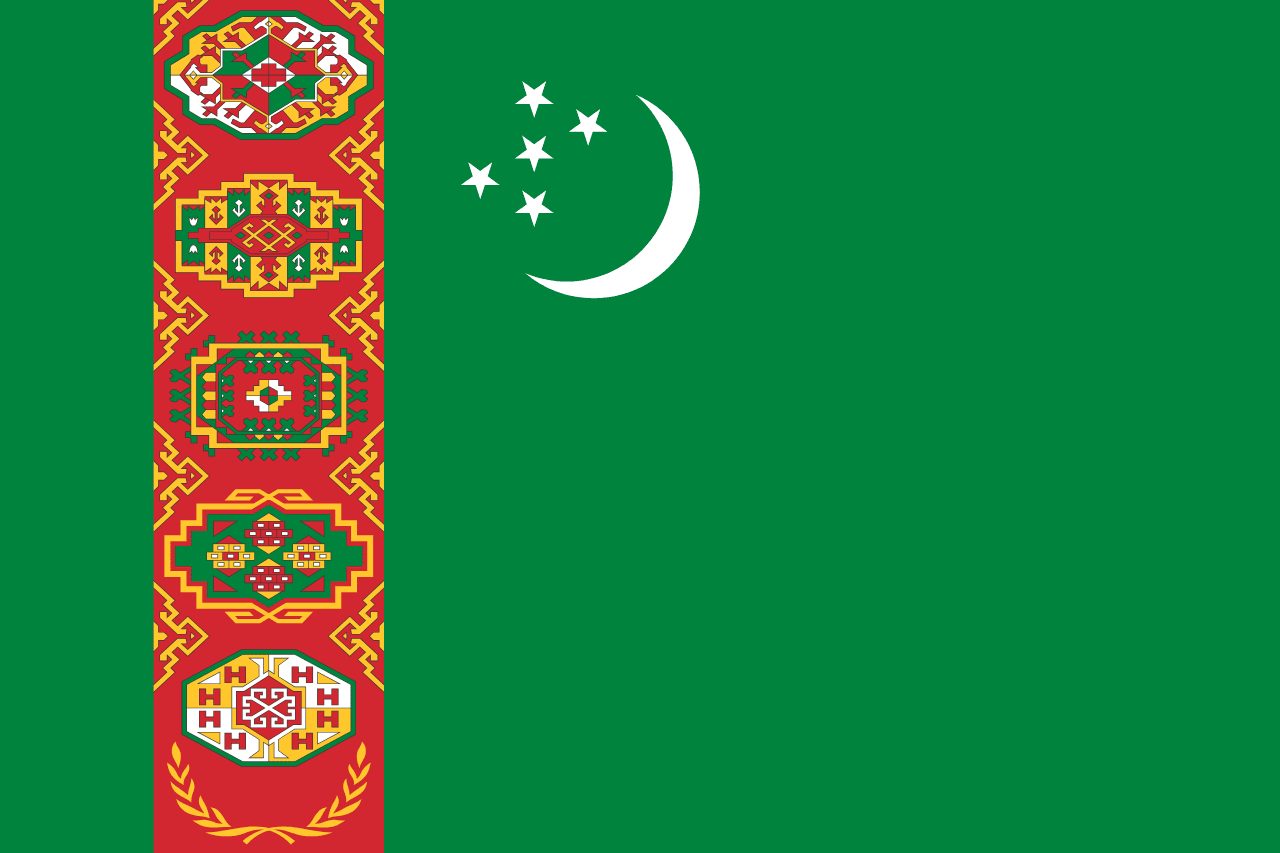
Turkmenistan
Asia
A green field with a vertical red stripe containing five traditional carpet guls (patterns) on the hoist side, and a white crescent moon with five stars in the upper left, representing Islam, the traditional carpet weaving culture, neutrality, and the five regions and senses of Turkmenistan.
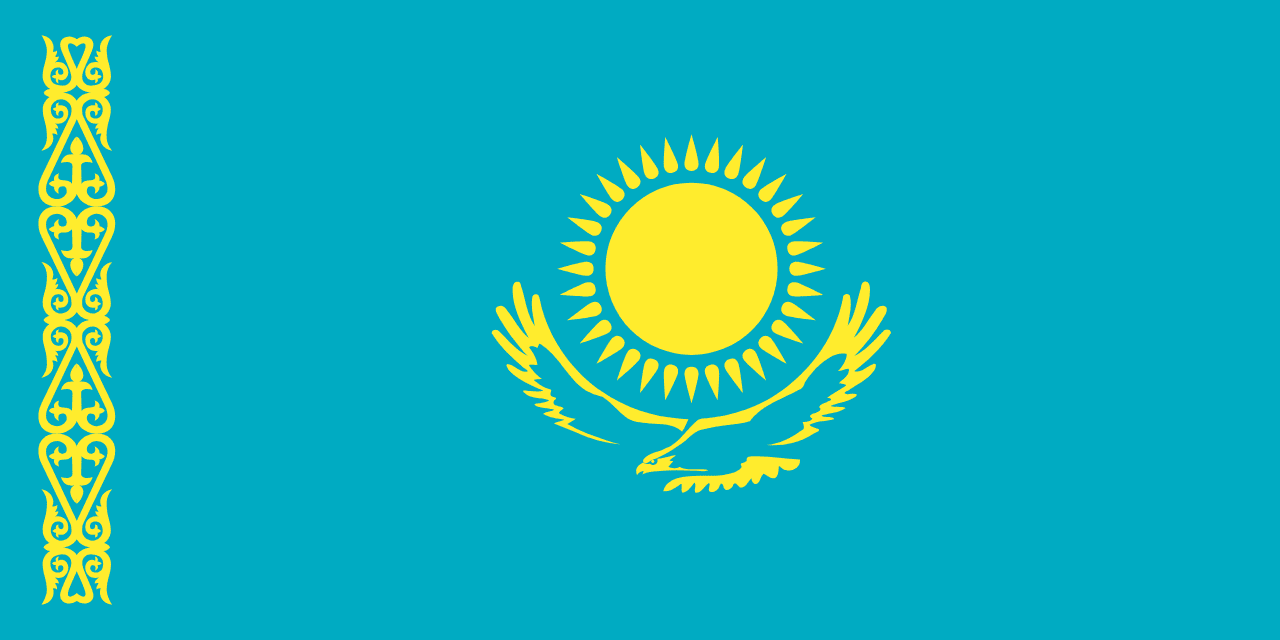
Kazakhstan
Asia
A turquoise field with a golden sun and soaring eagle in the center, and a traditional ornamental pattern on the hoist side, representing the eternal blue sky, freedom, and the rich nomadic heritage of the world's largest landlocked country.